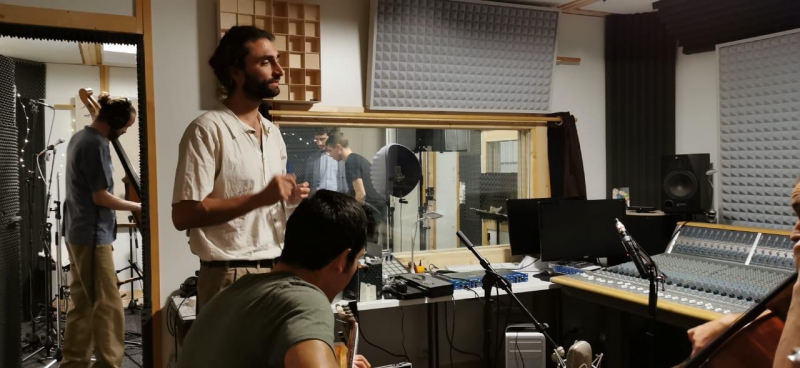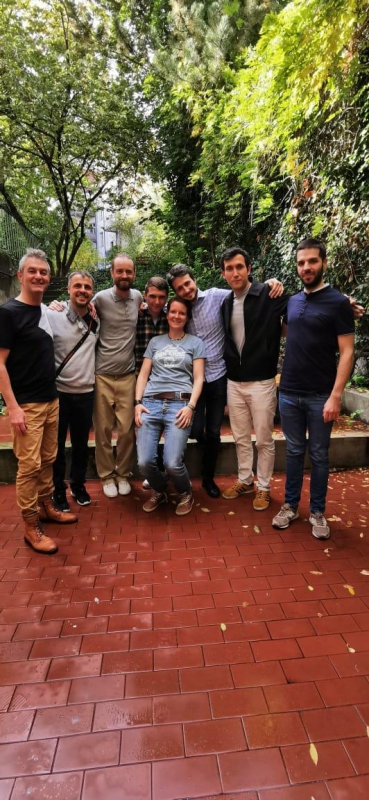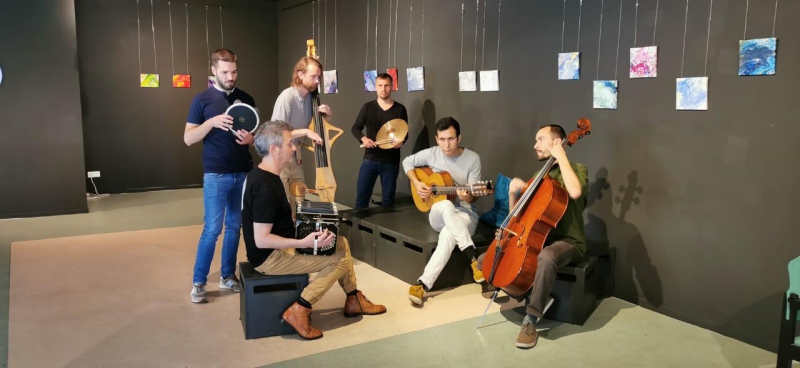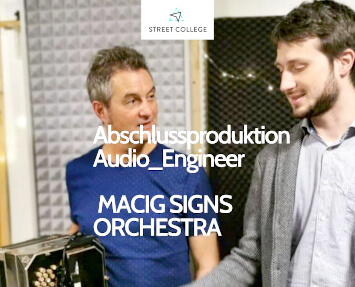Am letzten Wochenende im September war es endlich soweit: Zwei Studenten des Audio-Engineer-Diplom-Kurses, Arion und Nils, haben ihre Abschlussproduktion absolviert und eine mehrköpfige Band im Studio aufgenommen.

Und das war kein geringerer als Carlos Libedinsky mit seinem MAGIC SIGNS ORCHESTRA. Ein Musikprojekt, angesiedelt in Berlin, in dem Musiker aus der ganzen Welt beteiligt sind. Improvisation, geführt von Carlos Libedinsky mit dem „hand sign system“ (unten dazu mehr) das von dem argentinischen Musiker Santiago Vazquez erst vor 15 Jahren entwickelt wurde. So entsteht eine Musik des „in between“; zwischen Komposition und Improvisation; gefüllt mit Einflüssen unterschiedlichster musikalischer Traditionen die dann – gemeinsam – eine neue musikalische Welt entstehen lassen.
Im Gegensatz zu vielen heute gängigen Produktionen in denen Instrument für Instrument nacheinander einzeln aufgenommen werden – so, dass sowohl Korrekturen der Musiker*innen als auch deren Aufnahmeeinstellungen individuell regelbar sind – spielen die Musiker des MAGIC SIGNS ORCHESTRA als Band gemeinsam im Studio. Das war auch für die Studenten eine tontechnische Herausforderung die sie, mit einer gründlichen Vorbereitung, souverän gemeistert haben.
Am Ende des Wochenendes gab es nur glückliche Gesichter.

Wer weiß, was noch kommt ;-).
MAGIC SIGNS ORCHESTRA
Carlos Libedinsky (from Argentina , Bandoneon, LiveElectronics, Conductor ) Ibon Goitia (from Basque Country, Sax & Flute) Gábor Hartyáni (from Hungary, Cello ) Simon Houghton (from England, Contrabass) Carlos Corona (from Mexico, Guitar) Agustín Strizzi ( from Argentina, Drums) Peter Somos ( from Hungary, Percussion and Drums)

Und hier noch was für die Ohren 🙂
The hand sign system by Santiago Vazquez
The Percussion with Senas is a new way to percussion, based on group improvisation in which, through a language of about 150 signs made with the hands and body, a director can coordinate the flow of improvisation making the sum of individual ideas in a true collective composition. In this way, Percussion with Signs has become an innovative practice and that points to new horizons within the world of rhythmic music in general, and percussion in particular.
But its usefulness has quickly transcended the scope of the scenarios, to become a powerful tool for social integration at various levels. Due to the simplicity of their learning, and the depth and immediacy of their results, Sign Percussion has been tested in education at preschool, primary, secondary and tertiary levels, in various types of therapy, in processes related to the work of groups and organizations, and in programs of integration of marginalized social groups.
The Signing Percussion is both a language, a method and a musical game, in which the personal and interpersonal skills necessary for the integration of groups of any kind are put into focus and effectively and totally enjoyable. Some of these skills are external and internal listening, proactive attitude, understanding of roles within the group, coordination, creativity, valuing diversity, harnessing mistakes, leadership abilities, and all of this. from the deepest enjoyment.
This language was invented by the percussionist, director and composer Santiago Vazquez , and has already been adopted by a large number of groups in several countries, including La Bomba de Tiempo , a group that Vazquez himself created to implement this method, and that It has quickly become an obligatory reference for percussion in Argentina



